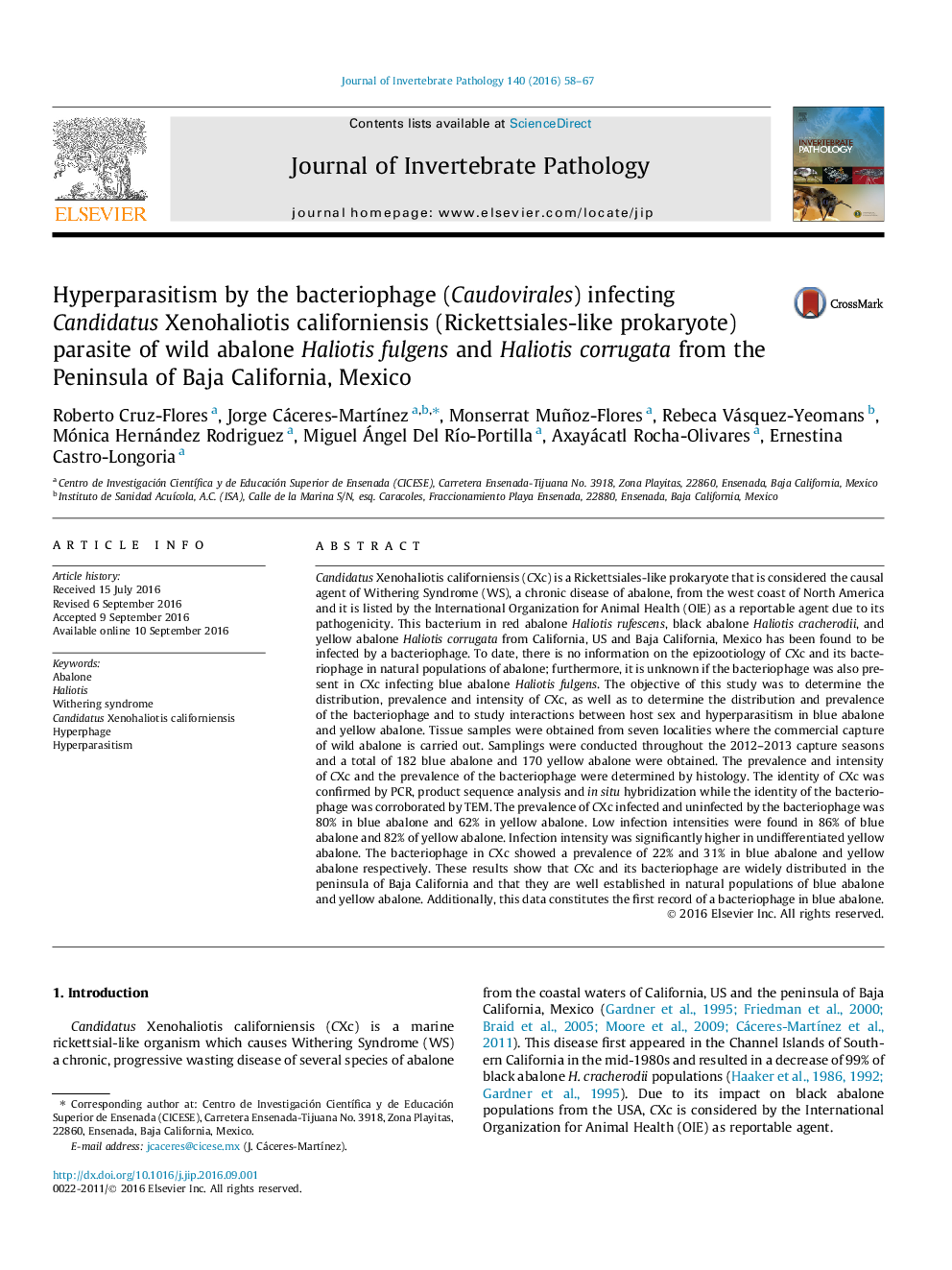| کد مقاله | کد نشریه | سال انتشار | مقاله انگلیسی | نسخه تمام متن |
|---|---|---|---|---|
| 4557481 | 1628212 | 2016 | 10 صفحه PDF | دانلود رایگان |

• First report of distribution CXc and its bacteriophage in Mexican abalone.
• First detection of hyperparasitism in wild blue abalone from Mexico.
• The hyperparasite has a distinct prevalence in CXc depending on abalone specie.
• A lytic infection by the bacteriophage could affect the survival of CXc in abalone.
Candidatus Xenohaliotis californiensis (CXc) is a Rickettsiales-like prokaryote that is considered the causal agent of Withering Syndrome (WS), a chronic disease of abalone, from the west coast of North America and it is listed by the International Organization for Animal Health (OIE) as a reportable agent due to its pathogenicity. This bacterium in red abalone Haliotis rufescens, black abalone Haliotis cracherodii, and yellow abalone Haliotis corrugata from California, US and Baja California, Mexico has been found to be infected by a bacteriophage. To date, there is no information on the epizootiology of CXc and its bacteriophage in natural populations of abalone; furthermore, it is unknown if the bacteriophage was also present in CXc infecting blue abalone Haliotis fulgens. The objective of this study was to determine the distribution, prevalence and intensity of CXc, as well as to determine the distribution and prevalence of the bacteriophage and to study interactions between host sex and hyperparasitism in blue abalone and yellow abalone. Tissue samples were obtained from seven localities where the commercial capture of wild abalone is carried out. Samplings were conducted throughout the 2012–2013 capture seasons and a total of 182 blue abalone and 170 yellow abalone were obtained. The prevalence and intensity of CXc and the prevalence of the bacteriophage were determined by histology. The identity of CXc was confirmed by PCR, product sequence analysis and in situ hybridization while the identity of the bacteriophage was corroborated by TEM. The prevalence of CXc infected and uninfected by the bacteriophage was 80% in blue abalone and 62% in yellow abalone. Low infection intensities were found in 86% of blue abalone and 82% of yellow abalone. Infection intensity was significantly higher in undifferentiated yellow abalone. The bacteriophage in CXc showed a prevalence of 22% and 31% in blue abalone and yellow abalone respectively. These results show that CXc and its bacteriophage are widely distributed in the peninsula of Baja California and that they are well established in natural populations of blue abalone and yellow abalone. Additionally, this data constitutes the first record of a bacteriophage in blue abalone.
Figure optionsDownload as PowerPoint slide
Journal: Journal of Invertebrate Pathology - Volume 140, October 2016, Pages 58–67